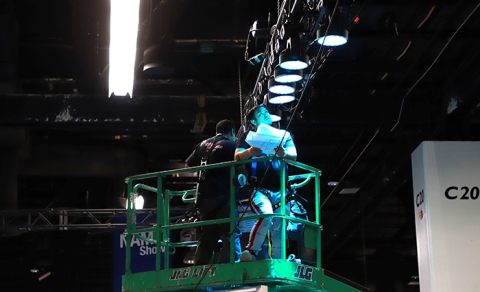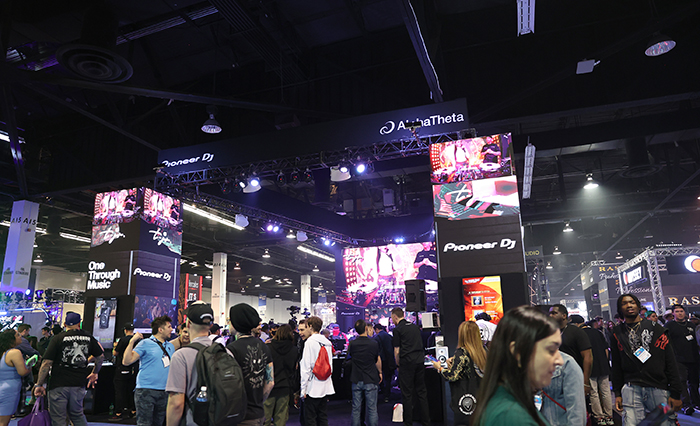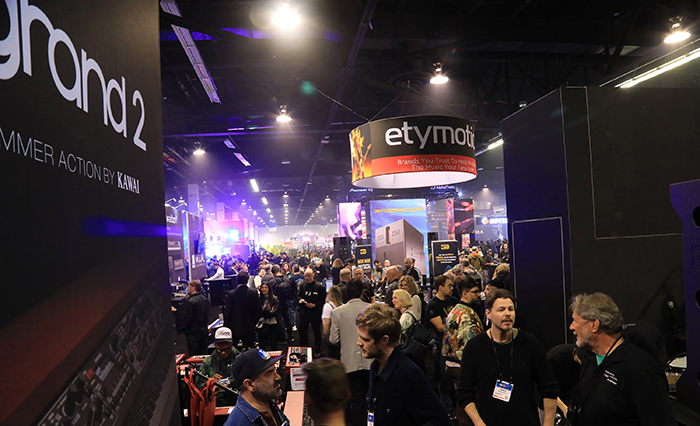Freeman and Industry Associations Find Common Ground on Rigging Safety Regulations

Last August, Freeman announced a rigging safety initiative that impacted exhibitors and event organizers with hanging signs, video walls that have overhead support and all other tie-offs. The rigging rule could have potentially affected thousands of exhibiting companies and events across the U.S. with higher costs and longer timelines.
In response, Exhibition Services & Contractors Association (ESCA), The Exhibitor Advocate and Experiential Designers & Producers Association (EDPA) collaborated with Freeman to roll back some of the requirements, making it faster, easier and cheaper for exhibiting companies and event organizers to reuse hanging signs, video walls and other tie-offs that have been previously certified by a professional engineer.
Context: Citing an American National Standards Institute (ANSI) Safety Recommendation from 2017, Freeman’s rigging policy issued in August 2023 implemented the following requirements, according to the Exhibitor Appointed Contractors Association (EACA):
- All fully suspended structures and/or tie offs will likely require a Professional Engineering (PE) Stamp from the state where the event is being held. Exhibitors should check with Freeman prior to the show to determine if the display needs a stamp.
- All Engineered Drawings must have a new PE Stamp each year.
- All Engineered Drawings must have the following: a depiction of the tie off; how the tie off will attach to the structure; the hardware that must be used on the structure itself (all load-bearing hardware must be domestically manufactured, forged and stamped); and building material used to construct the structure.

What The Exhibitor Advocate is saying: “The Exhibitor Advocate, along with our partners at EDPA and ESCA, approached Freeman with concerns from exhibitors on a rigging regulation that began rolling out in August of 2023,” explained Jessica Sibila, executive director of The Exhibitor Advocate.
“We’re pleased that Freeman heard the concerns of exhibitors and agreed to revise the regulation to allow engineering stamps to be accepted regardless of what state and what year in which the stamp was acquired, as long as there had been no structural changes. The revised regulation maintains the safety of our show floors without adding unnecessary cost and burden to exhibitors. The resolution of this issue reaffirms the power of partnerships and the solutions that can be realized when we collaborate as an industry.”
What Freeman is saying: “At Freeman, we are focused on creating meaningful moments, delivered safely,” said Freeman’s Chief Operating Officer, Event & Exhibit Services, Chris Schimek. “Our commitment to maintaining safe and secure events for our customers, attendees and employees is paramount to our business and the industry at large. This past fall, we updated our policies surrounding overhead structures to be fully compliant with the latest ANSI standards. After further conversations with our partners and customers, we have since revised our standards. The new standards are available today in show-specific exhibitor kits.
“In the revised standards, Freeman will continue to require engineering stamps for overhead structures and tie-offs. We will accept engineering stamps issued by structural or civil engineering firms in the United States. The engineering stamps are valid if the structure has not been modified from the time of the original design stamp and as long as the venue, municipality or state codes do not supersede Freeman guidelines. This means, if an exhibitor’s structure has previously been approved, and nothing changes, the original engineering stamp is still valid at any other Freeman event within the United States—as long as venue, municipality, or state codes match or do not exceed Freeman’s guidelines. These specific codes will always take precedence over Freeman standards.
“With regard to hanging signs and graphics, any sign or hung structure over 250 lbs. will require a secondary lifting device. Freeman will always adhere to the strictest guidelines for each event. This means when facilities have more stringent weight guidelines, Freeman will adhere to the facilities requirements. Detailed guidelines are available to exhibitors online within their show’s exhibitor kit.”

What ESCA is saying: “In the revised standards, Freeman will continue to require engineering stamps for overhead structures and tie-offs. The Engineering Stamp Requirements dictate that the stamp must be issued by a U.S.-based structural or civil engineering firm (without regard to acquisition by specific state and/or year), ensuring the original design remains unaltered, with local codes taking precedence. As for hanging signs and graphics, structures over 250 lbs. necessitate a secondary lifting device. Where applicable, all parties involved will adhere to guidelines set forth by facilities, ensuring safety and compliance with local facility and municipality codes.”
ESCA Executive Director Julie Kagy added, “Coming together with ESCA, EDPA, The Exhibitor Advocate and Freeman to address safety concerns in the exhibitor industry has been an incredible collaborative effort. Hearing diverse perspectives and engaging in transparent communication has underscored the importance of prioritizing safety while maintaining clarity and consistency for exhibitors. This joint initiative reflects our collective commitment to excellence and industry-wide standards. We're excited about the positive impact these revised regulations will have on trade show safety and look forward to continuing our collaborative efforts in the future."
What EDPA is saying: “EDPA has been a leader in advancing the trade show and event industry with a number of initiatives focused on workforce development and sustainability. We are excited to further partner with our sister associations to continue to build upon these efforts,” said Dasher Lowe, EDPA Executive Director.
What’s next: "As part of our ongoing commitment to promoting safety and excellence in the exhibitor industry, ESCA will soon be rolling out an official set of suggested guidelines for our membership and the industry at large to utilize,” Kagy said. “These guidelines, developed in collaboration with industry partners and informed by best practices, will provide valuable insights and recommendations to ensure the highest standards of safety and compliance at trade shows and events. We're excited to share these guidelines with our members and the industry in the weeks to come, further reinforcing our dedication to advancing safety standards and fostering excellence.”
Don’t miss any event-related news: Sign up for our weekly e-newsletter HERE, listen to our latest podcast HERE and engage with us on LinkedIn!


Add new comment